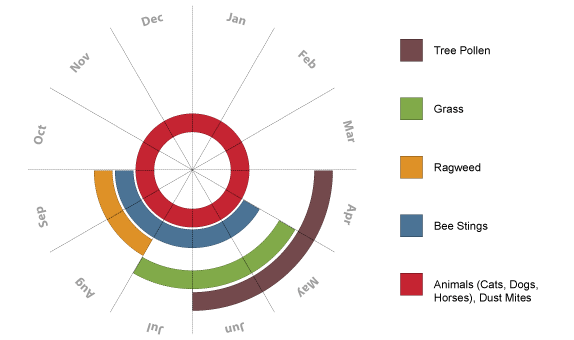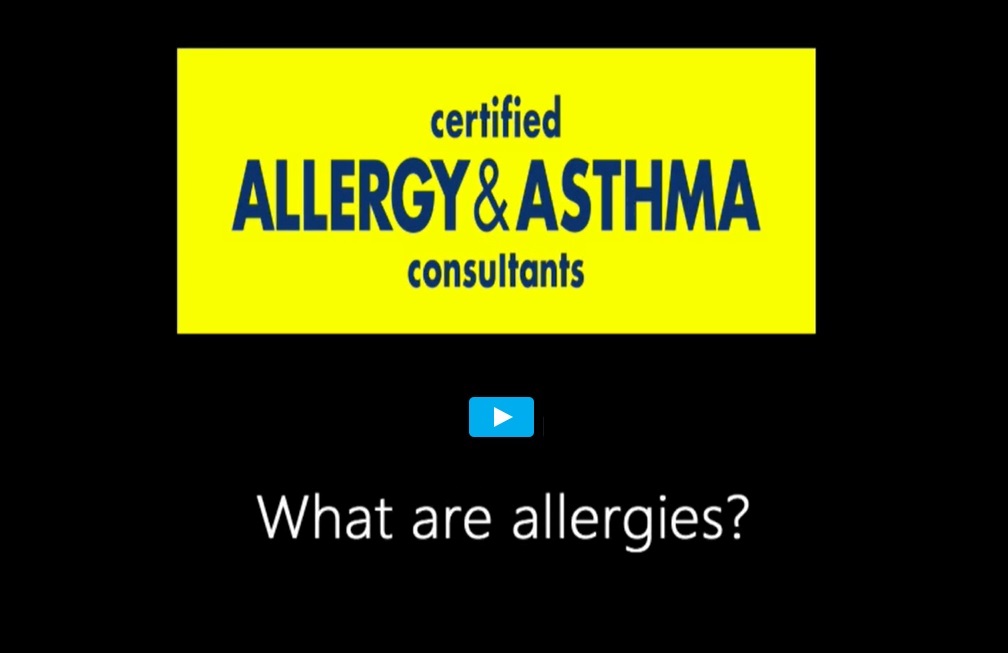What are Allergies?
An allergy is an abnormal reaction to substances ordinarily harmless to most people. These substances are called “allergens”.
Learn more about allergy testing here.
Take the Allergy Symptom Quiz
Learn about Allergy Symptom Triggers
College students and part-time residents can receive allergy injections prepared by their home allergist while in the area.
Allergens act as “triggers” causing people to experience symptoms like itchy eyes and throat, runny nose, congestion and in some cases asthma. Allergens are found indoors, outdoors and in things we eat. Insect stings can also cause an allergy. Contact with plants and both natural and synthetic substances (like latex) can cause a reaction. Medications are also known to cause allergic reactions.
Pollens from trees, grasses and weeds and mold spores are common outdoor allergens.
Maple, oak, elm, beech, birch, poplar, and ash trees are the primary trees whose pollen causes springtime allergies.
Grass pollen and ragweed are the most common late spring and summer allergens.
Indoor allergens are experienced year-round. Common indoor allergens include: animal dander, dust mites and indoor molds.
Stings from bees and fire ants can cause allergic symptoms.
Poison ivy, oak and sumac are common plants known to cause allergic reactions.
Common food allergies include: peanuts, tree nuts, milk, egg, soy, wheat, fish and shellfish, although other foods can cause allergies as well.

Allergy Symptoms
Allergy symptoms vary based upon the allergen. Pollen, mold, animal dander and dust mites typically cause sneezing, nasal stuffiness, runny nose, itchy, watery and red eyes, itchy ears and scratchy throat. Sinus headaches, facial pain and cough can also occur. These symptoms are associated with a common condition called allergic rhinitis (hay fever) and can act as triggers of asthma.
 Food allergy symptoms are very different from other allergies. They can be mild, moderate or severe. Mild to moderate symptoms include stomach pain, diarrhea, vomiting, hives, swelling and increased eczema. Severe allergic symptoms which can be life threatening include swallowing and breathing difficulties, dizziness and a drop in blood pressure. Food allergy symptoms can quickly progress from mild to severe.
Food allergy symptoms are very different from other allergies. They can be mild, moderate or severe. Mild to moderate symptoms include stomach pain, diarrhea, vomiting, hives, swelling and increased eczema. Severe allergic symptoms which can be life threatening include swallowing and breathing difficulties, dizziness and a drop in blood pressure. Food allergy symptoms can quickly progress from mild to severe.
Insect stings from honeybees, wasps, hornets, and yellow jackets can cause mild to severe reactions. Most people experience a mild reaction at the site of the sting. These mild symptoms, known as “local reactions” include pain, redness and swelling. A true allergic reaction to an insect sting is more severe and can be life threatening. These severe symptoms may include generalized itching, hives, swelling of the throat and tongue, difficulty breathing, dizziness, stomach cramps, nausea, diarrhea and loss of consciousness.
Allergies to plants and plant substances like latex, which is an allergy to natural rubber, are also called contact allergies. Contact allergies usually cause itching, blistering and oozing of the skin at the contact site. A serious form of latex allergy can also cause a reaction like those experienced with a severe bee sting allergy.
Allergies to medication can be caused by many different medications, although penicillin allergy is common. Allergies to anesthetics are also somewhat common. Medication allergy symptoms can range from a mild form of hives to severe symptoms which can be life threatening.
Allergy Diagnosis
To diagnose allergies, a physician (also known as an allergist) obtains a history from the patient and performs a physical examination. This history includes past medical conditions, family health, current and prior allergic symptoms, and details about the home, work and/or school environment.
Allergy skin testing may also be performed to determine the cause of allergic symptoms. This is a simple procedure which involves placing a small amount of various allergens on the skin and then lightly pricking the surface. In some cases, blood tests may be used. Patients with asthma or other breathing difficulties may also have a simple test to assess their ability to move air into and out of their lungs. All testing is tailored to the specific needs of the patient.
Treating Allergies
There are no quick and easy answers to treating allergic symptoms, and many patients are allergic to more than one thing. The first step is determining the specific cause of the symptoms. A treatment plan most often includes avoidance of the allergen, if possible, as well as medications to help control allergy symptoms.
Medications do not decrease the sensitivity to allergens; they only control your symptoms. Immunotherapy, in the form of allergy injections or allergy drops (sublingual immunotherapy), decrease the severity of allergy symptoms by decreasing the sensitivity to allergens. They use your own natural defenses to create a tolerance to triggers and reduce symptoms. Over time patients often find they need less medication as allergy immunotherapy builds this tolerance. To learn more, watch our short video.
 Studies show that treating allergies with immunotherapy may prevent the development of other allergies or asthma later in life. Also, for patients with asthma and allergies, studies show that immunotherapy can reduce the amount of inhaled steroid medication needed to control asthma symptoms.
Studies show that treating allergies with immunotherapy may prevent the development of other allergies or asthma later in life. Also, for patients with asthma and allergies, studies show that immunotherapy can reduce the amount of inhaled steroid medication needed to control asthma symptoms.
